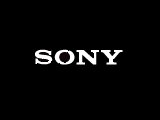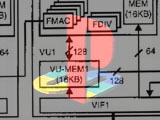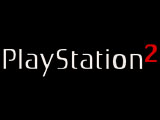

| Sunday, April 11th, 1999 |
|
Console Online Gaming Next Generation recently posted an article titled "5 Ways to Make Online Games Work on Consoles...". This should be of great interest to anyone who loves the concept of online gaming, but dislike all of the negatives that come along with playing games on a computer. Here are the 5 ways that NG presented:
2. Include the Modem in the Machine 3. Keep it Fast and Keep it Simple 4. Keep it Free 5. Offer More Than Just Gaming |
|
Wednesday, March 17th, 1999 - |
Sony Rules According to this Next Generation
article, Sony reigns
supreme in the gaming industry:
According to this Next Generation
article, Sony reigns
supreme in the gaming industry:
Nintendo was second and Electronic Arts third, followed by Sega, Acclaim and Infogrames. Overall, console software revenues increased 16 percent in 1998 to $10.4 billion, nearly five times the revenue of PC game software. This represents 82 percent of revenues in the home interactive market worldwide. "Between 50 and 60 percent of households, worldwide, now have video game systems, so it's not surprising console software sales remain significantly higher than PC and online entertainment revenue," said Walter Miao, Principal of Excel Research. "However, as the penetration of PCs grows in the publishers will enjoy strong sales as well." As the stakes constantly grow in the industry, companies are increasingly required to raise their games in order to succeed, especially with the advent of large conglomerations such as Havas and The Learning Company. "The requirement for success is getting steeper," Miao continued. "Companies are going to need about $500 million in revenue, a global presence, recognizable brands, a passionate but disciplined management team and a solid business plan to succeed in the home-entertainment market." With Sony leading the way, and PlayStation 2 now on the horizon, it would appear smaller companies will increasingly bite the dust in a now fearsome market. Becoming apparent is the fact that console manufacturers will be at the forefront of the industry in the future, rivalling the mighty PC top-dogs in all respects. The scenario of giant console outfits battling it out at the top of the industry on a global scale is becoming an increasing reality. How long will it be before there's no more room left for the little man? |
|
Saturday, March 6th, 1999 |
PlayStation 2 Specs PSX.IGN.COM recently released the
official PlayStation 2 specs. Here
they are:
PSX.IGN.COM recently released the
official PlayStation 2 specs. Here
they are:
|
|
Tuesday, March 2nd, 1999 |
Major PlayStation 2 News According to this article at
PSX.IGN.COM, the PlayStation 2 is going to be more
than just the ultimate videogame system:
According to this article at
PSX.IGN.COM, the PlayStation 2 is going to be more
than just the ultimate videogame system:
The Nihon Keizai Shimbun reported early Monday morning that the new PlayStation which confirms many of the most recent fervent rumors and all of our sources will produce movie-like cinematics comparable to the image quality seen in Pixar's Toy Story, and that it integrates the use of music, movie, and game media on one console. The PlayStation 2's new microprocessor will enable games to render nearly 50 times more 3D image data than Dreamcast, a serious leap over Sega's much-vaunted console, which processes 3 million polygons with all effects in use. In fact, the PlayStation 2 chip is to have data-processing speed several times faster than that of Intel's Pentium III, the report stated. But the real catch is that development costs for the new 128-bit microprocessor which integrates image processing, memory, and other functions onto a single chip. The total costs of specially designing this chip have reached nearly 10 billion yen (84 million dollars). Add to that the cost of mass-producing a multi-format DVD console, and you've just invited a world of potential problems specifically high financial costs to your new console. Although the PlayStation 2 will have data-processing capability several times more than that of a PC, the retail price will be kept below 100,000 yen, company officials said. What does that mean to you and us? For Japanese gamers, that may very mean a high-cost console, albeit the most powerful commercial console to ever reach a living room. A total of 100,000 yen coverts to approximately $840 by today's rate (about 119 yen to the US dollar). The last company that tried to deliver a multi-format set-top box at the price was 3DO, which no longer produces any hardware products. (Get the picture?) Still, to put things in perspective, not only was there no official response from Sony Japan (Sony Computer Entertainment Inc.), but Sony America (Sony Computer Entertainment America) did not phone us back by deadline either. It's highly unlikely that the keen marketing executives at Sony will launch the PlayStation 2 at such a price.
TOKYO (Nikkei)--Sony Computer Entertainment Inc. plans to release the follow-up to its popular PlayStation video game system by March 2000. The successor to the world's biggest-selling 32-bit game console is to feature a microprocessor co-developed with Toshiba Corp. (6502) that provides motion picture-quality images, The Nihon Keizai Shimbun learned Sunday. Likely to be called PlayStation 2, it will also be able to play movies and music stored on DVDs, allowing players to integrate various entertainment media into video games. While it will have data-processing capability several times more than that of a personal computer, the price will be kept below 100,000 yen, company officials said. Development costs for the new 128-bit microprocessor -- which integrates image processing, memory and other functions onto a single chip -- reached nearly 10 billion yen. The chip is to have data-processing speed several times faster than that of Intel Corp.'s Pentium III. The Sony unit seeks more than dominant market share in the video game console market with the chip, company officials said. "We take aim at the stranglehold on the chip/operating system market enjoyed by the Intel-Microsoft alliance," an executive said. He added that major battles will shift from spreadsheets, e-mail or other business-related areas to home entertainment systems fusing games, movies and music. The new microprocessor will allow users to handle nearly 50 times more 3-D image data compared with Sega Enterprises Ltd.'s (7964) Dreamcast game console. It will also let users produce game characters comparable in image quality to Walt Disney's Toy Story. While the PlayStation console employs CD-ROMs as its medium of data storage, its successor will adopt DVD-ROMs, boosting storage capacity by 7-8 times to 4.7 gigabytes." We'll just have to wait and see... |
|
Monday, March 1st, 1999 |
Preview @ PlayStation Interactive PlayStation Interactive have posted their preview of Quake 2. Here it is:
Some of you may have played Quake on many systems and asked "So whats the big deal?". The deal was that Quake 1 was the first game to make the whole world (including monsters and weapon models) in total 3D. Things took on a much more realistic look and a great feel was felt. But Quake is very aged now, and maybe not right for consoles. Afterall, the pudgy Quake Marine has *cringe* 15 frames of animation. And with there being no multiplayer or crappy multiplayer in all the console versions it was just a to little to late (especially as Quake 1's single player mode sucks). So now Activision and Hammerhead decide to grace us with a conversion of their PC smash for the PS and N64. So far the screens for the PS version look promising. And from what I'm told, the game will have a very smooth 4-player mode. Lets hope that when you have quad and 4 chainguns are going off at once there won't be a hint of slowdown. If this is the case then Q2 has already established itself as a landmark title for the Playstation. With multiplayer aside, what else does Q2 offer? Hammerhead has decided to work harder on the single player aspect of the game and it shows. Having beaten Q2 on the PC version the levels are all very cool and well done, but the corridor lengths will be widened on the PSX version, to make for better cornering. Monsters range from cyber enhanced dog-like aliens with tongues that reach across two rooms to the 'Tank's, big creatures that look like a tank with an arsenel of over 4 weapons ready to blow you away. And the final boss is also very cool and is a great idea for a last boss. Player models are much more diverse with you being able to chose from male or female characters and then different 'skins' (same model with different colors and looks). Weapons to are much more diverse then in Quake (some for the worse though). The weapons include: a pistol, shotgun, super shotgun, machine gun, grenades, chaingun, grenade launcher, rocket launcher, railgun, hyper blaster and the infamous BFG (now known as the BFG 10k). Each weapon is fairly cool except for the starting weapon which sucks. The pistol is lame and not nearly as fun as Quake's starting weapon, the shotgun. Speaking of the shotgun it makes a return with a little less umph but the super shotgun does up to 120 damage if all shells hit. This is the weapon that'll make the Dual Shock compatibility that much more awesome. One thing is aparent in Quake 2: It's single player is a big improvement over Quake's (which is a must for a PSX port) and it has a very good multiplayer, which hopefully will translate well to a quad-split-screen. With an analog pad and a few adjustments Quake 2 may well be one of the best things to hit the Playstation in a long time. Game Fan on PSX Quake 2 GameFan OnLine recently posted this news tidbit on PSX Quake II:
Currently it's running at 30 fps, with realtime lightsourcing and particle gun/smoke/fire effects. As well it sports some really nice transparencies. Amazingly enough, there is no warping, and no distorted polygons. The developers are currently looking into a 4 player mode on the Playstation as well, via the multitap. The details are ultimately lowered, but the emphasis is on speed -- the frames don't slow down. From what we hear, it's awesome. Hammerhead is also going to include new enemies and weapons for the Playstation game. They are working closely with id to ensure that they match the style of the rest of the Quake series, so this will surely be an added bonus for Playstation owners. Quake 2 will appear on the Playstation sometime in the second quarter of this year. We'll be back with more info and pictures soon. Preview @ PlayStation MAX PlayStation MAX has also posted a preview of Quake 2. Here's what they had to say:
Ahem...okay that's enough and let's get straight to the point of this preview...QUAKE 2 WILL BE HITTING THE PSX SOON! Yes that's right! The PSX can actually run Quake 2, and thanks to the strong efforts of the developer...Hammerhead. Hammerhead has done what nobody thought could be possible as they made a playable version of Quake 2 running on the PSX. The PSX is a powerful console, but not powerful enough to run the first Quake game (which explained why it never came). Hammerhead managed to make Quake 2 run on a machine that's less powerful than a PC, and judging from the screen shots, I find the game looking good. So how did they do it? Well details are scarce at the moment but the PSX version of Quake 2 was shown running at a smooth frame rate of 30 frames-per-second. Hammerhead has also taken advantage of the PlayStation's lighting effects library (your projectiles give off light on it's way) as well as it's polygon power. Any differences? You can see that the graphics look very good for a PC-to-PSX port, though the PSX version does not have the level of detail the PC version has. The biggest difference here is that the game's levels/corridors look smaller in size and space. Quake 2 here is supposed to have 30 levels for playing. Game modes? The biggest news here is that this version will sport a DEATHMATCH MODE for that multi-player fun you'd like to have on a Quake game. 2 players can play at the same time on the PSX via split-screen. 4 players can play but that will take 2 sets of TV's, PSX, 2 copies of Quake 2, 4 controllers, 2 power cables, 2 audio-video cords and 2 link cables. Monsters and weapons? At this moment, Quake 2 actually ran with only a few enemies present. The weapons here lack the others. Let's just hope that Quake 2 on the PSX will be able to maintain it's frame-rate even with many enemies and weapons present. Will this game come out with a RAM upgrade cart? At this moment, it's likely that Quake 2 will hit the PSX without an upgrade and this means that you'll see the PSX pushed to it's very limits again. However, if those limits are not enough (the game may run slower as more enemies, weapons and other stuff are added), then the PSX might finally get the upgrade cart. Maybe Sony will provide one. Quake 2 will hit the PSX sometime in the 1st half of 1999, and it's just right that this game will finally hit the console which is nearing the end of it's life. You miss shooting in 1st person view? If Quake 2 comes out the way we want it to be (based on how it will be converted), then your 1st person shooting days will be happy. |